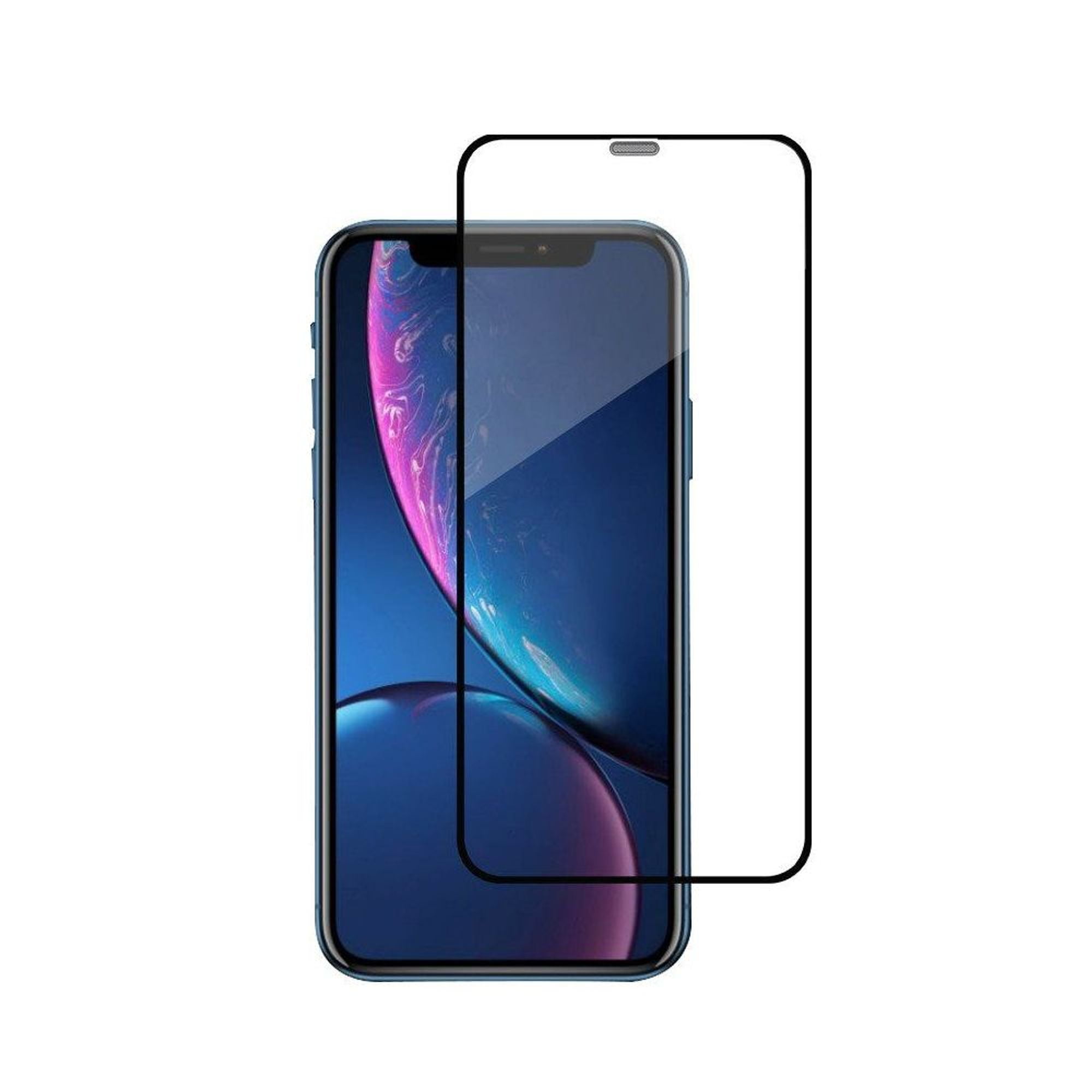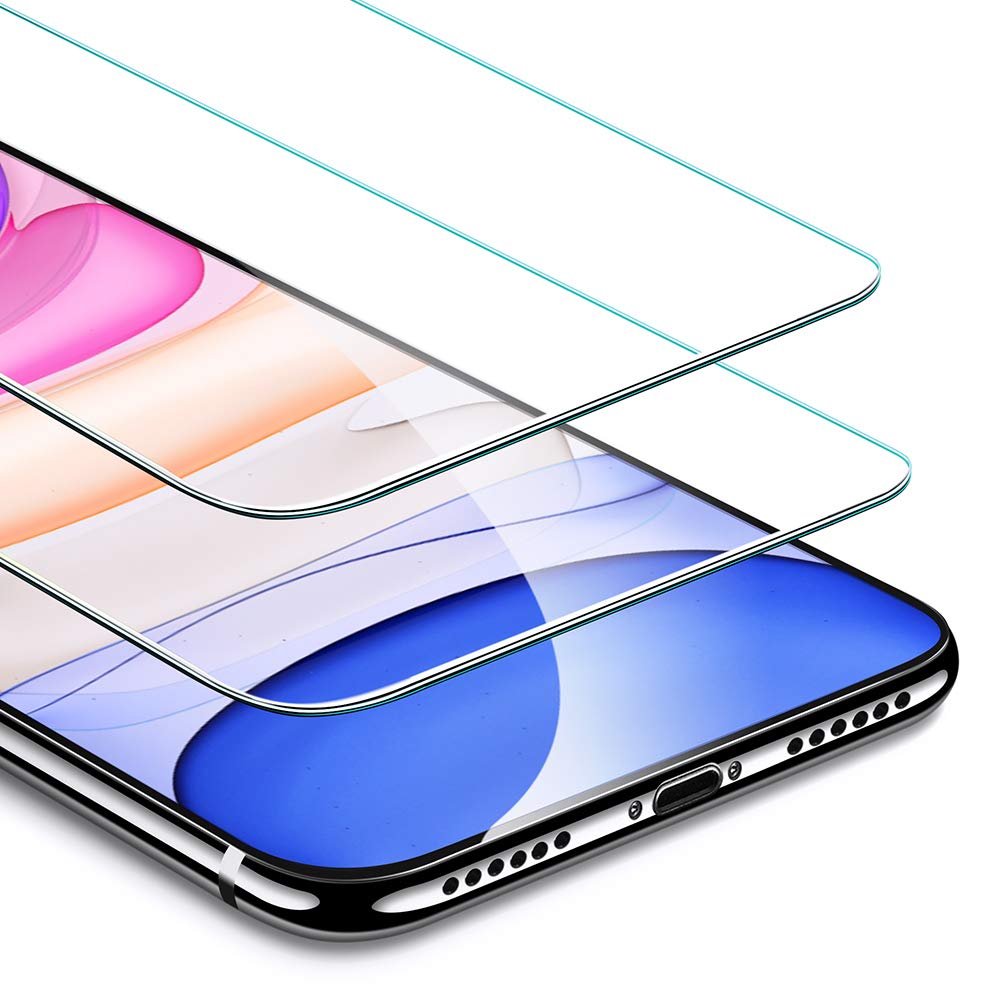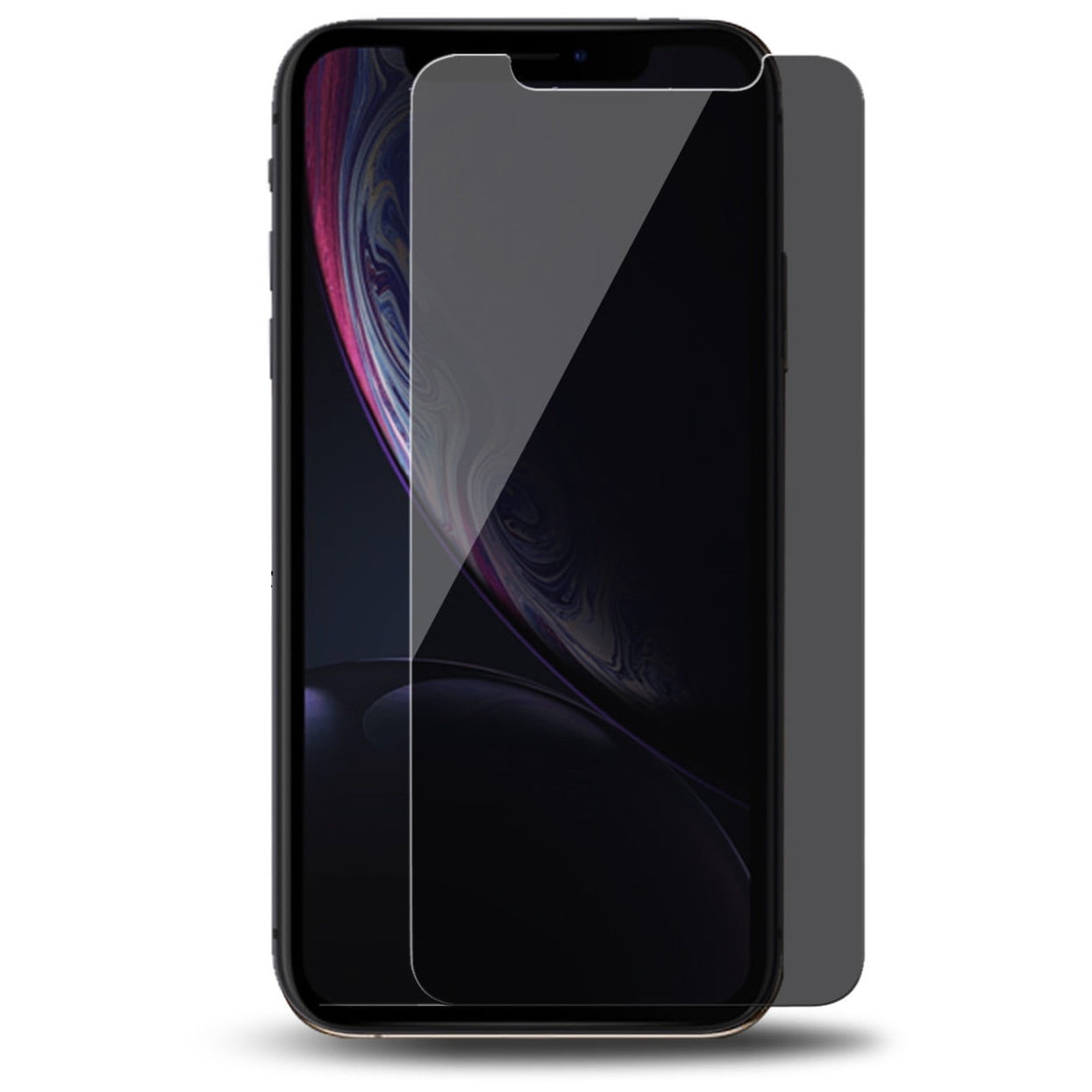Screenprotector iphone 11 – Screen Protector iPhone 11: Protecting your iPhone 11’s vibrant display is essential, and choosing the right screen protector is key. From tempered glass to plastic film, the options are vast, each with its own strengths and weaknesses. Understanding the different types, their pros and cons, and key factors like screen size and usage patterns will help you find the perfect shield for your iPhone 11.
This comprehensive guide explores the world of iPhone 11 screen protectors, diving into the various types available, factors to consider before making a purchase, installation tips, popular brands and models, and essential maintenance advice. Whether you’re a tech enthusiast or a casual user, this guide will equip you with the knowledge to make an informed decision and safeguard your iPhone 11’s screen.
iPhone 11 Screen Protector Types

Protecting your iPhone 11’s screen is crucial, as it’s susceptible to scratches, cracks, and other damage. Screen protectors act as a barrier, safeguarding your device’s display.
Types of Screen Protectors
Different screen protector types offer varying levels of protection and features. Here’s a breakdown of the most common options:
- Tempered Glass: Tempered glass screen protectors are known for their exceptional scratch resistance and durability. They are made from chemically treated glass, making them significantly stronger than regular glass. This makes them ideal for protecting your screen from drops and impacts.
- Plastic Film: Plastic film screen protectors are a more budget-friendly option. They are typically made from thin, flexible polyurethane material and offer basic protection against scratches and minor bumps. However, they are less durable than tempered glass and may not offer the same level of impact resistance.
- Liquid Screen Protectors: Liquid screen protectors are a relatively new technology. They are applied as a liquid solution that bonds to the screen, creating a protective layer. This type of screen protector offers excellent clarity and touch sensitivity, but it may not be as scratch-resistant as tempered glass.
Advantages and Disadvantages of Each Type
| Type | Pros | Cons |
|---|---|---|
| Tempered Glass |
|
|
| Plastic Film |
|
|
| Liquid Screen Protector |
|
|
Factors to Consider When Choosing a Screen Protector: Screenprotector Iphone 11

Choosing the right screen protector for your iPhone 11 is crucial for safeguarding its beautiful display. While the iPhone 11 boasts a robust glass screen, an extra layer of protection can prevent scratches, cracks, and other damage, ensuring your device remains in pristine condition. This guide will delve into the key factors to consider when making your decision.
So, you’ve got your iPhone 11, and you’re ready to protect that beautiful screen. A good screen protector is essential, especially if you’re a fan of cool wallpapers like this Arnold iPhone wallpaper , which might make you want to show off your phone more. Once you’ve got that screen protector on, you can feel free to switch between your favorite wallpapers and not worry about scratches.
Screen Size and Usage Patterns
The size of your iPhone 11’s screen plays a significant role in determining the appropriate screen protector. The iPhone 11 boasts a spacious 6.1-inch Liquid Retina HD display, making it essential to choose a screen protector that covers the entire screen without interfering with the edges or functionality. Your usage patterns, such as how often you use your phone outdoors or in potentially hazardous environments, should also influence your selection.
For instance, if you frequently use your phone outdoors, a screen protector with anti-glare properties might be a better choice.
Budget and Desired Protection Level
Screen protectors are available in a wide range of prices, reflecting varying levels of protection. A basic screen protector made of tempered glass or plastic can provide a decent level of protection at a relatively low cost. However, if you require maximum protection, you might consider investing in a premium screen protector with features like anti-shatter technology, impact resistance, and scratch-resistant coatings.
Your budget will determine the features and protection level you can afford.
Compatibility with iPhone 11 Features
It is essential to choose a screen protector that is compatible with the iPhone 11’s features. For instance, ensure the screen protector does not interfere with Face ID, a crucial security feature on the iPhone 11. The screen protector should also be compatible with the iPhone 11’s oleophobic coating, which helps prevent fingerprints and smudges. A compatible screen protector will maintain the smooth, responsive feel of the display while providing the necessary protection.
Types of Screen Protectors
The market offers various screen protector types, each with its strengths and weaknesses. Here’s a breakdown of the most common types:
- Tempered Glass: This type is known for its strength and durability. Tempered glass screen protectors offer excellent protection against scratches and impacts, providing a high level of protection. They are also generally more responsive to touch compared to other types.
- Plastic: Plastic screen protectors are more affordable than tempered glass but offer less protection. They are generally thinner and more flexible, making them easier to apply. However, they are more susceptible to scratches and cracks.
- Hybrid: Hybrid screen protectors combine the strengths of both tempered glass and plastic. They often feature a tempered glass layer for impact protection and a plastic layer for flexibility and scratch resistance.
Installation Process and Tips

Installing a screen protector on your iPhone 11 can be a delicate process, but with careful attention and the right techniques, you can achieve a flawless, bubble-free application. The installation process generally involves cleaning the screen, aligning the protector, and smoothing out any air bubbles. However, the specific steps may vary slightly depending on the type of screen protector you’ve chosen.
Cleaning the Screen
Before applying the screen protector, it’s crucial to ensure your iPhone 11’s screen is meticulously clean. Dust, fingerprints, and other debris can interfere with the adhesion of the protector, leading to unsightly bubbles and potential damage to the screen.
- Use a microfiber cloth to gently wipe away any dust or fingerprints from the screen.
- If necessary, dampen the microfiber cloth with distilled water or a screen cleaning solution, avoiding harsh chemicals that could damage the oleophobic coating on the screen.
- Thoroughly dry the screen with a clean microfiber cloth.
Aligning the Screen Protector
Aligning the screen protector correctly is critical for a seamless fit and optimal protection.
- Carefully peel off the backing of the screen protector, exposing the adhesive side.
- Slowly and gently lower the protector onto the screen, aligning it with the edges of the phone. Ensure the protector is centered and covers the entire screen.
- If you need to adjust the protector’s position, do so carefully, avoiding excessive pressure that could introduce air bubbles.
Removing Air Bubbles
Air bubbles are a common occurrence during screen protector installation, but they can be easily removed with a few simple techniques.
- Use a microfiber cloth or a squeegee to gently smooth out the air bubbles from the center of the screen protector towards the edges.
- If stubborn bubbles persist, apply light pressure with your fingertip, starting from the center and moving outwards.
- For small bubbles, you can try using a heat gun or hairdryer to gently warm the screen protector, which can help the adhesive release the trapped air.
Applying Pressure for Optimal Adhesion, Screenprotector iphone 11
After aligning the screen protector and removing any air bubbles, it’s essential to apply pressure to ensure optimal adhesion.
- Use a microfiber cloth or a squeegee to firmly press down on the screen protector, starting from the center and moving outwards.
- Apply even pressure across the entire surface of the protector, ensuring it adheres securely to the screen.
- Avoid applying excessive pressure, as this could potentially damage the screen protector or the phone’s screen.
Popular Screen Protector Brands and Models

Choosing the right screen protector for your iPhone 11 can be a daunting task given the wide array of options available in the market. To help you make an informed decision, we will delve into some of the most reputable brands and their popular models.
Popular Screen Protector Brands
This section provides a list of reputable brands known for producing high-quality iPhone 11 screen protectors, with an overview of their strengths and popular models.
- Spigen: Spigen is a well-known brand in the phone accessory market, offering a wide range of screen protectors for various devices, including the iPhone 11. They are known for their durable and affordable options.
- Caseology: Caseology is another popular brand that provides a wide range of screen protectors, including tempered glass and flexible film options. Their products are known for their clarity and scratch resistance.
- Whitestone Dome: Whitestone Dome is renowned for its innovative liquid-dispensing technology, which results in a seamless and bubble-free installation. Their screen protectors are known for their high clarity and durability.
- Otterbox: Otterbox is a brand known for its robust protective cases, and they also offer screen protectors that complement their case lineup. Their screen protectors are designed to provide maximum protection against scratches and impacts.
- Zagg: Zagg is a leading brand in the screen protection market, offering a variety of options, including tempered glass and film protectors. Their products are known for their durability and ease of installation.
Specific Models and Their Features
This section provides details about specific models from the aforementioned brands, highlighting their features, pricing, and user reviews.
- Spigen Glas.tR Slim: This tempered glass screen protector from Spigen is known for its slim profile and high clarity. It offers excellent scratch resistance and impact protection, making it a popular choice among users. It is priced at around $10-$15.
- Caseology Vault Series: The Vault Series from Caseology offers a combination of tempered glass and flexible film, providing excellent scratch resistance and impact protection. The screen protector is known for its clarity and ease of installation. It is priced at around $12-$18.
- Whitestone Dome Glass Screen Protector: Whitestone Dome’s liquid-dispensing technology ensures a seamless and bubble-free installation. Their screen protectors are known for their high clarity, scratch resistance, and impact protection. The price is typically around $40-$50.
- Otterbox Alpha Glass Screen Protector: Otterbox’s Alpha Glass screen protector is designed to provide maximum protection against scratches and impacts. It is known for its durability and clarity. The price is around $30-$40.
- Zagg InvisibleShield Glass+: Zagg’s InvisibleShield Glass+ screen protector is known for its high clarity, scratch resistance, and impact protection. It features a unique self-healing technology that helps to minimize scratches. The price is typically around $25-$35.
Comparison of Popular Brands
This section compares and contrasts different screen protectors from popular brands based on their performance, durability, and aesthetics.
| Brand | Model | Performance | Durability | Aesthetics |
|---|---|---|---|---|
| Spigen | Glas.tR Slim | Good | Good | Clear |
| Caseology | Vault Series | Excellent | Excellent | Clear |
| Whitestone Dome | Glass Screen Protector | Excellent | Excellent | Clear |
| Otterbox | Alpha Glass Screen Protector | Excellent | Excellent | Clear |
| Zagg | InvisibleShield Glass+ | Excellent | Excellent | Clear |
Screen Protector Maintenance and Care

A screen protector is an essential investment for your iPhone 11, safeguarding its delicate display from scratches, bumps, and other potential damage. However, to ensure your screen protector continues to provide optimal protection, it’s crucial to implement proper maintenance and care practices. This involves regular cleaning, dust removal, and addressing common issues that may arise.
Cleaning and Maintaining Your Screen Protector
Regular cleaning is essential to maintain the clarity and functionality of your screen protector.
- Use a microfiber cloth to gently wipe away fingerprints, smudges, and dust particles. Avoid using abrasive materials or paper towels, as these can scratch the screen protector’s surface.
- For tougher stains, dampen the microfiber cloth with distilled water or a screen cleaning solution specifically designed for electronics. Avoid using harsh chemicals or cleaning agents that could damage the screen protector.
- After cleaning, dry the screen protector thoroughly with a clean, dry microfiber cloth. Ensure no residue or moisture remains on the surface.
Removing Dust and Fingerprints
Dust and fingerprints can accumulate on the screen protector, obscuring the display and affecting its touch responsiveness.
- To remove dust particles, use a soft-bristled brush or a can of compressed air. Gently blow or brush away any dust that has settled on the screen protector. Avoid using harsh blowing methods, as this can potentially damage the screen protector.
- For fingerprints, use a microfiber cloth slightly dampened with distilled water or a screen cleaning solution. Gently wipe away the fingerprints in a circular motion. Ensure the cloth is not overly wet, as this can seep under the screen protector and cause damage.
- If the fingerprints persist, consider using a specialized screen cleaning solution specifically designed for electronics. Apply a small amount to a microfiber cloth and gently rub the affected areas. Avoid excessive pressure or rubbing, as this can damage the screen protector’s surface.
Common Screen Protector Issues and Troubleshooting
While screen protectors are designed to be durable, they can encounter various issues over time.
- Scratches: Scratches on the screen protector are a common issue, especially with glass protectors. To prevent scratches, avoid placing your iPhone in your pocket with keys or other sharp objects. Additionally, avoid using abrasive cleaning materials or paper towels.
- Air Bubbles: Air bubbles can form under the screen protector during installation or due to changes in temperature. To remove air bubbles, gently press on the affected area with a clean finger or a soft cloth. If the air bubble persists, consider reapplying the screen protector.
- Lifting or Peeling: The screen protector may lift or peel away from the edges due to improper installation, dust accumulation, or wear and tear. To address this issue, carefully reapply the screen protector or consider replacing it with a new one.
- Loss of Touch Responsiveness: Over time, the screen protector may lose its touch responsiveness, especially if it is damaged or has accumulated excessive dust or debris. If you experience a loss of touch responsiveness, clean the screen protector thoroughly. If the issue persists, consider replacing the screen protector.
Questions Often Asked
What is the best screen protector for the iPhone 11?
The best screen protector for the iPhone 11 depends on your specific needs and budget. Tempered glass offers excellent protection, while plastic film provides a more affordable option. Consider your usage patterns and desired level of protection when making your choice.
How do I remove air bubbles from my screen protector?
To remove air bubbles, gently press and smooth the screen protector from the center outwards, working your way to the edges. If stubborn bubbles remain, try using a credit card or a squeegee to push them out.
How often should I replace my screen protector?
The lifespan of a screen protector varies depending on its type and usage. Tempered glass protectors generally last longer than plastic film. Replace your screen protector when it shows signs of wear and tear, such as scratches or cracks.